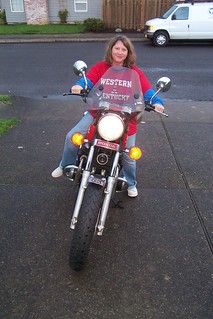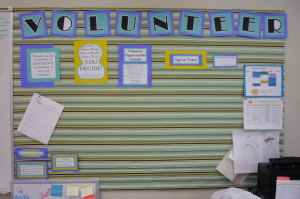Apps, social media, text messaging/SMS and other information and communication technologies (ICTs) are already playing a crucial role in educating people regarding public health issues, reaching marginalized communities and helping those that may be targets of harassment and discrimination. But in all of these tech4good initiatives, the importance of safety and security for those doing the outreach and those in the target audience is critical. People trying to promote a tech4good initiative do not want the technology to be used by hostile parties to identify, track and target people based on their health, lifestyle or beliefs.
For those interested in using ICTs to reach marginalized communities, or those interested in how to communicate vital information about topics that are frowned-upon in religiously conservative communities, the new publication Pioneering HIV services for and with men having sex with men in MENA: A case study about empowering and increasing access to quality HIV prevention, care and support to MSM in a hostile environment, is well worth your time to read. The United States Agency for International Development (USAID) funded this project, and the 48-page publication was produced by the International HIV/AIDS Alliance and co-authored by Tania Kisserli, Nathalie Likhite and Manuel Couffignal. The publication includes two pages on how ICTs help to reach hidden communities threatened by police raids and rising homophobia in the MENA (Middle East and North Africa) region – for instance, how applications such as Grindr that are frequently accessed by men having sex with men (MSM) in the MENA region and provide virtual venues for disseminating information on HIV prevention, treatment and support services.”
The publication includes two pages on how ICTs help to reach hidden communities threatened by police raids and rising homophobia in the MENA (Middle East and North Africa) region – for instance, how applications such as Grindr that are frequently accessed by men having sex with men (MSM) in the MENA region and provide virtual venues for disseminating information on HIV prevention, treatment and support services.”
This is from the report (note that this is with British spellings):
In 2015, the partners of the MENA programme implemented a pilot online peer outreach project to reach more MSM, in partnership with the South East Asian Foundation B-Change Technology.
In order to improve the understanding of the online habits and behaviours of MSM, two anonymous web surveys were launched online to collect information among MSM (living in Algeria, Lebanon, Morocco and Tunisia), recruited via Facebook and instant messaging channels. The first survey assessed technology use and included questions about mobile devices and tech-based sexual networking. The second survey collected further data on social media behaviours, with questions about using social networks, interpersonal communications, and negative experiences online. The results confirmed the penetration of internet and mobile technologies in urban centres, and highlighted the widespread use by MSM of mainstream social networks (predominantly Facebook) and global gay dating apps, especially in the evening. The predominant website for sexual networking was reported to be Planet Romeo; the predominant smartphone app for sexual networking was Grindr. The results also revealed that while MSM use smartphone instant messaging (SMS and Whatsapp mainly) to communicate and chat with friends, they tend to use the telephone when communicating with health providers. Sexual networking among this cohort demonstrated a preference for web-based methods versus offline (public space) networking. A significant proportion of negative experiences using social media or apps was also reported, in particular cases of breach of confidentiality online.
Based on these findings, the partners designed a pilot information and communications technology (ICT)-based intervention. Experienced peer educators created avatars representing different profiles of beneficiaries, collectively designed an online peer outreach intervention and developed the corresponding standard operating procedures and M&E framework. This was identified as the most feasible output based on existing resources and ICT experience. Building the capacity of community groups for this intervention would result in more effective use of popular social media platforms for MSM-peer outreach activities. Local trainings of ‘online peer educators’ were organised to strengthen digital security, content creation systems, online outreach procedures, conduct of peer educators online, and M&E framework to measure the outcomes towards the HIV continuum of care.
The trained ‘online peer educators’ created ‘virtual peer educators’ accounts/profiles and contacted MSM though internet and social media in their respective countries, mainly on Facebook, Whatsapp, Grindr, Hornet, Planet Romeo, Badoo, Tango and Babel, and mostly during evening and night shifts. The objective was to contact MSM not reached by the usual outreach in public spaces, and hence continue expanding the package of prevention services available to MSM. They provided interpersonal communications on HIV and STIs, disseminated IEC materials online, encouraged them to take an HIV test and referred them to prevention services provided by the partner organisations, as well as public health services in their country.
This test phase lasted from July to September 2015 in Agadir, Beirut, Tunis and Sousse. The results were promising; during the month of September 2015, the six online peer educators of ASCS in Agadir for instance reached 546 MSM via chat rooms, websites, apps and instant messaging. They referred 148 MSM for an HIV test and 86 MSM for an STI consultation. During this period ASCS noticed an increase of number of MSM visiting the association to collect condoms and lubricant; ASCS peer educators appreciated this new type of outreach work compared to street outreach, the latter being uneasy due to growing harassment of police. Some challenges that peer educators faced online were similar to ‘traditional’ or face-to-face outreach work: high interest in sexual health, initially reluctance to visit association or uptake services, or to change risk behaviour.
“The virtual prevention pilot project has allowed us to reach a significant number of MSM, in particular those who remain hidden and aren’t reached through our outreach activities in the streets.” — peer educator and university student in Morocco
Some of the lessons learned from this pilot project:
- Overall high acceptability: many MSM are eager to engage in an online conversation about HIV and STI prevention, rights and services; virtual spaces are perceived as safe to talk freely about sexual practices with no face-to-face bias; however, a significant proportion of MSM contacted online refused any discussion relating to sexual health and HIV.
- Strong operational procedures and human resource capacity are required to maintain a high quality ICT tool that maintains privacy and confidentiality; consequently, organisational ICT capacity needs to be assessed and strengthened before initiating an online prevention project.
- Monitoring and evaluation challenges: it is not easy to measure service use or user engagement online or to clearly show the link between use of ICT and uptake of services; monitoring of referral pathways between outreach CSOs and friendly providers needs to be aligned to track referral from virtual spaces to services.
One thing I do wonder: were any of these people involve volunteers?
Also see:
- Virtue & reputation in the developing world
- Judgment & reputation online – and off
- Women-only hours at community Internet centers? why?
- Reaching women in socially-conservative areas
- Folklore, Rumors (or Rumours) and Urban Myths Interfering with Development and Aid/Relief Efforts, and Government Initiatives (and how these are overcome)







 In
In 

